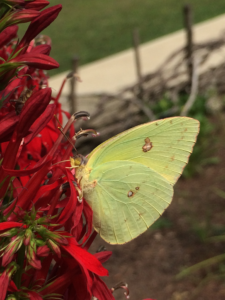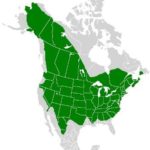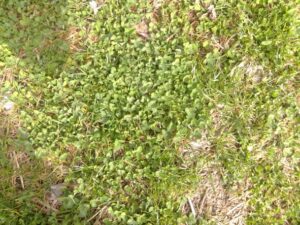By Liz Neroni, Naturalist

When you spend a good amount of time outside you notice things, trends, that happen from season to season, year to year. You can also tell when things are different or abnormal. However, observations can pass us by without much thought, and something small can get lost in the craziness of life. This year, one of those fleeting observations grabbed my attention – but not until multiple people had asked me why they were seeing so many small yellow butterflies. It made me realize I had the same thought and that I wasn’t the only one. There was a huge abundance of clouded sulphur butterflies this spring and summer, and that is continuing even now as we enter the cooler fall months. The question is: Why?
To find an answer we must know more about the object in question. These butterflies are extremely common throughout most of North America, starting off as a tiny yellow egg which turns a crimson color, and then grey – showing Ohio spirit – before hatching! Then, the little green caterpillar with a small white stripe down its side can be found on clover, soybean, alfalfa, and other legumes. After emerging from its green chrysalis, the butterfly flies close to the ground around prairies, fields, and along roadways, pretty much any open area. Varying in size and color, from pale yellow to white, bright yellow, and even yellow with a hint of green or orange, these butterflies are quite beautiful and individually unique. They find flowers for nectar and they gather to puddle on exposed wet earth. Puddling is when a butterfly uses their proboscis, or tongue, to collect minerals and salts from mud. This species is well known for this behavior.

So, if Clouded Sulphur Butterflies are common, don’t have a very rare host plant or habitat, and can be easily seen due to their behaviors, wouldn’t they be apparent all the time? What caused us to recognize a difference? Have sheer numbers just increased? Do we have more open space due to development? Honestly, there is no direct answer. Factors such as temperature, weather, number of predators, crop rotations, and more can cause their numbers to change. Nonetheless and most importantly, this fluctuation happens to most insects naturally. It seems like sulphurs are having a boom year. No matter the reason, take time to make this observation and enjoy the radiant flashes of yellow before the winter dormancy.








